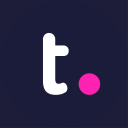How I Achieved $1K MRR Without Writing A Single Line of Code
Hello! Who are you and what business did you start?
Hi everyone. My name is Mike Taber and I’m the founder of Bluetick.io. We’re a self-funded SaaS app that helps salespeople, customer success reps and busy founders close the loop with their customers using sequences of automated email follow ups.
Most people think automated email follow ups are only useful for sending cold emails, but that couldn’t be further from the truth. Situations exist in virtually every online business where customer-facing email interactions can be partially or completely automated.
It’s easy to fire off an automated email, but Bluetick solves the problem of making sure that the recipient took an action based on that email and if they don’t, it will gently remind them that you’re still waiting on them.
Were you asking if they’d be willing to do a case study or provide a testimonial? Did their credit card expire and it needs to be updated? Do you need more information about an order that was placed? Need files they promised to send? Need a new customer to fill out a form to scope out the work they requested?
All of these are entirely reasonable requests and most people are perfectly willing to...

Download the report and join our email newsletter packed with business ideas and money-making opportunities, backed by real-life case studies.

Download the report and join our email newsletter packed with business ideas and money-making opportunities, backed by real-life case studies.

Download the report and join our email newsletter packed with business ideas and money-making opportunities, backed by real-life case studies.

Download the report and join our email newsletter packed with business ideas and money-making opportunities, backed by real-life case studies.

Download the report and join our email newsletter packed with business ideas and money-making opportunities, backed by real-life case studies.

Download the report and join our email newsletter packed with business ideas and money-making opportunities, backed by real-life case studies.

Download the report and join our email newsletter packed with business ideas and money-making opportunities, backed by real-life case studies.

Download the report and join our email newsletter packed with business ideas and money-making opportunities, backed by real-life case studies.

















